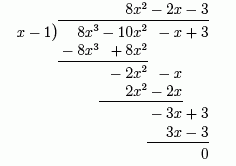CBSE conducts class X board exams in March every year. The syllabus for Class 10 English is not at all tough. If students prepare right from the beginning or read chapters of their textbooks, it will be way too easy to score well. The syllabus is designed in such a way that it enhances the students’ written as well as verbal or communicative skills. Yet, children pay heed to the subject only in the end and tend to make silly mistakes. Overnight preparation for any subject can be very risky as it leads to excessive stress, anxiety and sheer confusion. Therefore, students must devote at least a couple of months to the subject, to improve their comprehension skills as well as written and verbal.
English Class 10 Board Exam Overview:
The marking scheme of English for class X is as under:
Section A – This section tests the reading ability of the students. Questions in this section sum to 20 marks. Students are required to read passages and answer the questions asked from the same. These are in the form of multiple-choice questions.
Section B – Section B focuses on the writing skills of the students. The entire section is of 30 marks.
Section C – Section C covers the entire literature portion, questions are asked from the prescribed textbooks of students in class 10. The entire section is of 30 marks.
Best books for class X English
If you read your textbooks thoroughly and on a regular basis, you can score good marks in the literature section easily. For the grammar section, practice is the only mantra for success. Nonetheless, keeping in mind your busy schedule of the students, the following are the best reference books that may prove very helpful to children.
- Communication English by Oswal – The book also has previous years’ question papers that students can refer to.
- Together with English is also a good alternative for all those who wish to practice grammar.
- Students can also refer to High School English Grammar and Composition Book- Wren and Martin
However, it is recommended to study NCERT books prescribed by the CBSE board thoroughly on a regular basis.
Students who prepare at the last moment may suffer due to confusion. Grammar portions at times can confuse students in terms of their format, structure, and no practice. They may face problems in expressing their feelings and thoughts in story writing or composition or may not understand unseen passages that test their reading skills.
Following are a few tips to work on when studying at the last moment or at least one week before the examination:
- Read all the stories and poems thoroughly, remember the central idea/ theme, author/ poet and the title of the chapter.
- Read news articles or short stories at least twice a day.
- Write a para on current topics, or maintain a diary wherein you can pen down your emotions.
- Pen down formats of formal letter, subject been agreement, tenses and story writing and important topics on a blank paper, keep it on your study table so that you can go through it regularly.
- Make a schedule, devote equal time to every section.
- Keep a watch in front of you when reading a passage or writing so that you get an idea of how much time it takes for the same.
- Attempt mock tests or solve the last ten years’ paper.
Frequently Asked Questions on English Class X Examination
Q 1. Is it okay to study from last years’ paper?
Answer. If you are preparing at the last moment, you can go through the last ten years’ papers for practice. Also, do remember the correct title of the chapter in literature and the author or poet.
Q 2. What should I do to enhance my vocabulary?
Answer. You need to keep reading your textbooks, newspapers, or news articles. Try learning three to five new words daily along with their synonyms.
Q 3. How does a school assess students internally?
Answer. The pattern of internal assessments depends on schools. Some schools assess on the basis of internal tests or exams while some assess on the basis of the overall performance of the students or assignments as well as an oral examination.
Q 4. Is English paper tallies only 80 marks?
Answer. English paper sums to 80 marks in total while the remaining 20 marks rest with the school internal assessment.
The post Which Book is Best for English Class 10? appeared first on Learn CBSE.


































